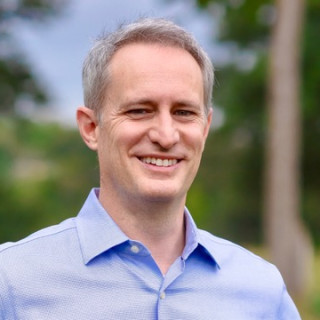
Physicians are called to this profession to improve quality-of-life, if not save it. That is our calling and our oath. We pledge our time and resources to the betterment of others. Yet many of the administrators who have assumed the helm of our healthcare delivery system have not taking this oath nor committed themselves to this ideal. And for many physicians, other clinicians, nursing and support staff, this could not be more evident in the workplace than it is today.
There is a speed at which good care happens. Ironically, the mantra of speed and productivity works in direct opposition to quality of care, as well as provider and patient satisfaction, which is an important metric for administrators to consider, as these factors stand to be increasingly linked to reimbursement. Put simply, physician burnout is the single biggest threat to the health and wellbeing of both physicians and patients.
Airline pilots. Air traffic controllers. Physicians. Nursing and support staff. What do these professions have in common? They take care of thousands of people each day. There is a speed and volume at which good care happens. Going faster than that or processing more than that is simply dangerous for all involved. Yet the majority of administrations in medicine remain committed to the idea that speed and volume are good medical practice. So let us be clear: speed and volume are good for the business of medicine, not the quality of medicine. In fact, we are now seeing the adverse effects of such thinking and practice on both physician health and overall quality of patient care.[1]
Work-life balance is largely a misnomer. It does little good to have a balance between time at work and time away from work if you are still miserable while at work. A better, and more accurate, goal for physician and provider well being is simply balance at work — finding a relationship between work, lunch, patients, and finishing a shift on time.[2]
Speed. Cost. Quality. In business, you can choose any two you like. Do you want it fast and want to preserve quality? Okay. You can have that. But you’re going to pay more for it. Do you want top quality at a lower price? Then you better allow some time for that. What does the business of medicine demand? The business of medicine asks for top quality at top speed at the lowest price (and lowest rate of error).
Applied to healthcare, this approach consistently devalues and disregards the basic needs of personnel, shortchanges the patients who are receiving the care, all the while placing licensed practitioners at risk of losing their license should a mistake be made in the setting of mandated high-volume work environments.
When airlines need to save money, they don’t start with the pilots. They start with the processes. Do you think the public would go for a decision in which airlines removed the co-pilot for the sole purpose of saving money? Yet that is what many urgent care centers across the country have decided in recent years as competition has increased in this particular area of medicine. A single provider is often expected to work 12+ hours without a break for lunch, and deliver care up to one minute before close, often keeping the entire staff well past closing, insisting that the clinic “optimize its efficiency” regardless of the toll on staff or the expense of resulting turnover — to say nothing of the quality of care and attention those last-minute patients receive. The message to staff from leadership: you are not as important as the money. Message from leadership to patients: your money is more important than the wellbeing of our staff who, ironically, are still expected to take good care of you even though they treated poorly by their employers.
Physician burnout is the single biggest threat to the health and wellbeing of both the physicians and patients,[3] yet these administrative approaches and patterns continue in many employment model practices. “Hold bosses accountable for physicians’ emotional well-being, in addition to the financial and quality measures,” Dr. Jennifer Ramsey of Cleveland Clinic recommends, citing a study in the April 2015 Mayo Clinic Proceedings that analyzed the impact of health care leadership on physicians.[4] Physician suicide now ranks above all other professions, with over 400 deaths a year occurring at all levels and in all areas of medicine.[5] It is time we openly query medical administrators and leadership and openly communicate their responses to the patients of our medical establishments.
Solutions will vary of course. And like many solutions, simple does not always mean easy. Money will (likely) always be a consideration, but ignoring the toll of toxic work environments, and adversely impacting caregivers and patients, because of financial imperatives is no longer an acceptable way to operate the business of medicine. Everyone is under pressure to perform and be profitable. If administrations feel pressure from Insurance and other payers to consistently increase volume and productivity, then we need to address that together. If insurance payers feel bound by legislation, then we need to address that, together. But simply passing the buck downstream and whipping the provider workforce into submission is not good for anyone short- or long-term.
Finding a way to provide a patient care environment that values and adequately supports the basic needs of its employees is a first step. If staff are working a 12-hour urgent care shift, for example, it makes sense from a human resources perspective to ensure time for lunch and to support a schedule that recognizes the need to leave on time at the end of a long shift, so that team members are able to enjoy their families and return the following day ready and willing to do it all again.[2]
It is important to understand that our experience as physicians gets paid forward to our patients. We owe it to ourselves and to our patients to advocate for better — dare I say healthy — working environments. And to help medical administrations, leadership and organizations better understand that we must be supported if we are to do our best, safest, highest quality work. To quote Doug Illiff, MD, “Put people before efficiency, and you’ll get both.” It will be worth it for everyone in the end.
Dr. Smith is a physician, educator, certified coach and patient advocate living in Austin, Texas. Working at the intersection of medicine and mindfulness, Dr. Smith applies the principles of coaching psychology to both his clinical and professional development coaching practice. Dr. Smith has no conflicts of interest to report.
References:
1 https://www.mayoclinicproceedings.org/article/S0025-6196(16)30625-5/fulltext
2 https://www.healthleadersmedia.com/clinical-care/two-kinds-interventions-reduce-physician-burnout
3 https://psnet.ahrq.gov/perspectives/perspective/190/burnout-among-health-professionals-and-its-effect-on-patient-safety
4 https://acphospitalist.org/archives/2018/06/beating-burnout.htm
5 https://afsp.org/our-work/education/healthcare-professional-burnout-depression-suicide-prevention/







